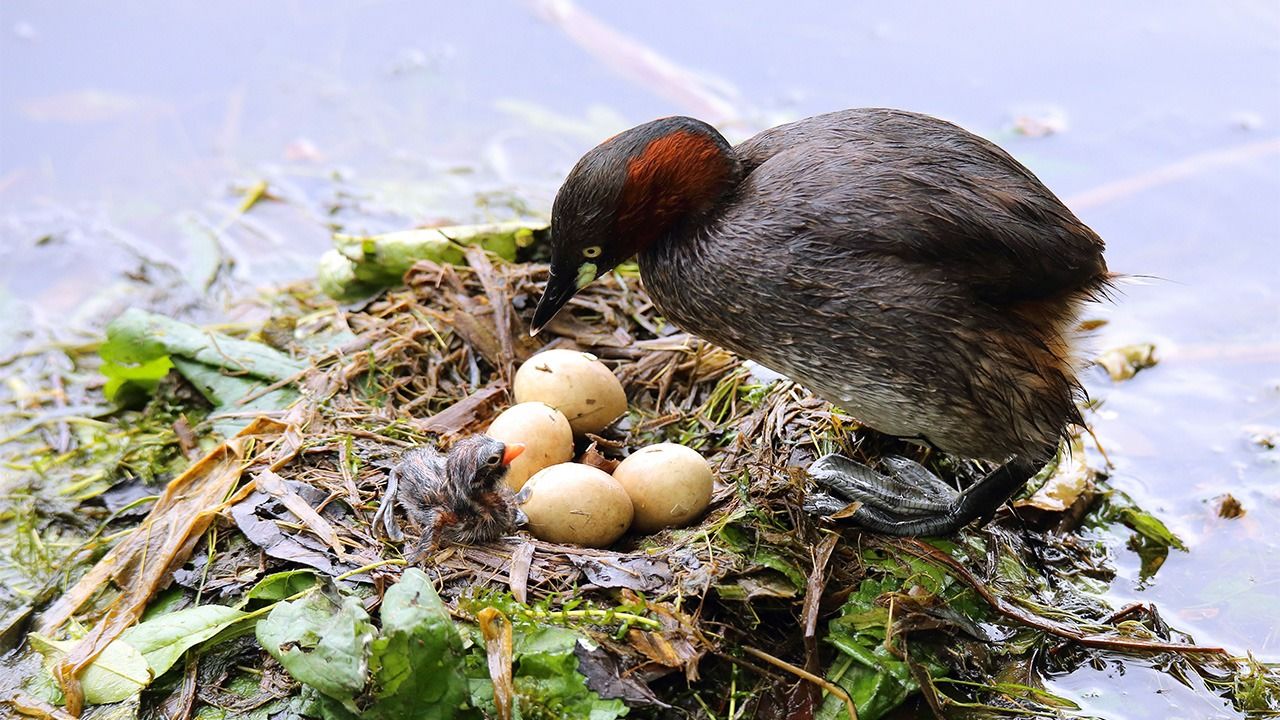
A Journey Through Japanese Haiku
An Invitation in the Rain
Culture Environment Lifestyle- English
- 日本語
- 简体字
- 繁體字
- Français
- Español
- العربية
- Русский
さみだれに鳰のうき巣を見にゆかむ 芭蕉
Samidare ni / nio no ukisu o / mi ni yukan
In early summer rain,
let’s go see the
grebe’s floating nest(Poem by Bashō, written in 1687.)
Rainy season typically starts in early June throughout much of Japan and lasts to mid-July. In Bashō’s day, the rains came during the fifth month in the former lunar calendar, and the season word samidare in the poem, meaning “early summer rain,” is written in kanji as “fifth month rain” (五月雨).
Nio is an old name for the kaitsuburi, or little grebe, a water bird whose nests of mounded vegetation seem to float on the surface of the lakes and ponds they inhabit. The nio no ukisu or “little grebe’s floating nest” traditionally symbolized something transient and tenuous. For example, the twelfth-century poet Princess Shikishi wrote the following waka: Hakanashi ya / kaze ni tadayou / nami no ue / nio no ukisu no / sate mo yo ni furu (Ephemeral—/ like a grebe’s nest / floating on the waves, / blown by the wind—/ living in this world).
Bashō implores the reader to see for themselves the little grebe’s nest floating on the rising waters of a rainy season downpour. It is an appeal to appreciate the fleeting phenomenon in real life, where it is actually found. He wrote of the poem that it is only made of words that had previously appeared in poems like waka and renga, but the invitation “let’s go see” is in the haiku spirit.
(Originally published in Japanese. Banner photo © Pixta.)

